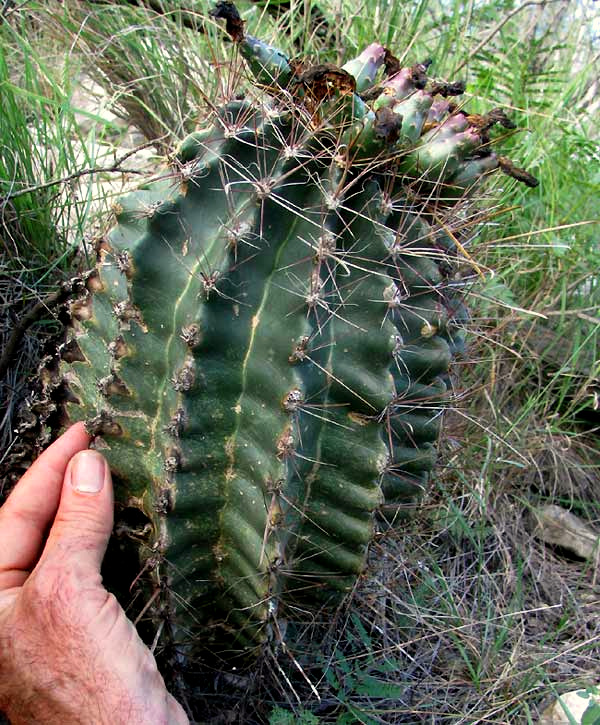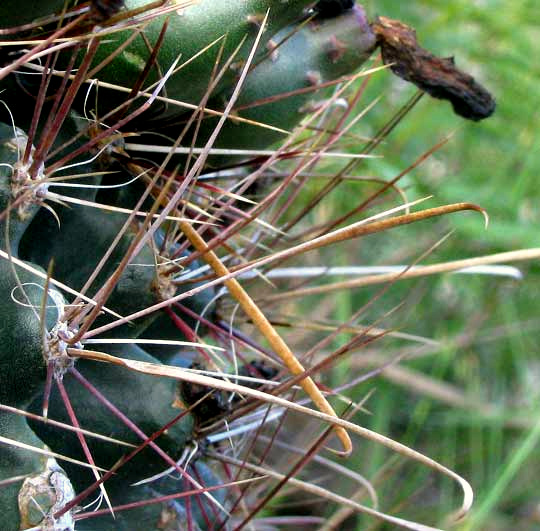Excerpts from Jim Conrad's
Naturalist Newsletter

from the October 6, 2013 Newsletter issued from the Frio Canyon Nature Education Center in the valley of the Dry Frio River in northern Uvalde County, southwestern Texas, on the southern border of the Edwards Plateau; elevation ~1750m (~5750 ft); N29.62°, W99.86°; USA
BARREL CACTUS
Tangles of Tasajillo cactus were fairly common on certain hilltops, but another cactus species was rare and very unexpected. It's shown above.
This small, barrel-type cactus was topped by immature, pear-shaped, green fruits bearing brown, shriveling remains of flowers. Notice that the body's upper spines are particularly long. Also notice that each spine cluster arises atop a bump, or "tubercle," situated along the rim of one of about 13 vertical ribs. A close-up of a cluster of spines is shown below:

There you see that atop each tubercle, spines arise from whitish, fuzzy-looking spots known as areoles. Each areole normally bears 7-14 spines. Of these spines, usually four arise from the areole's center, while the remaining ones radiate from the areole's perimeter. Also, note that one of the four large, central spines in each cluster is somewhat flattened and hooked at its tip -- like a fishhook.
It's hard to identify cacti without flowers and/or fruits. At first I thought it was a Fishhook Cactus, but when I showed the picture to botanist Bob Harms at the University of Texas, he expressed the same opinion that it's hard to identify without key characters, but that he thought it was too large to be a Fishhook. He guessed that it was what's sometimes called the Texas Barrel Cactus, but also Turk's-head Barrel Cactus and Mexican Fruit Cactus, FEROCACTUS HAMATACANTHUS, on the grounds that "... the spines and 'nipples' form strong clear ridges and the fruit is not uniformly cylindrical to the top, but has a sort of small extension on the top."
This wonderful cactus is endemic to a handful of counties in southwestern Texas and the two arid Mexican states across the Rio Grande just to the west and south.